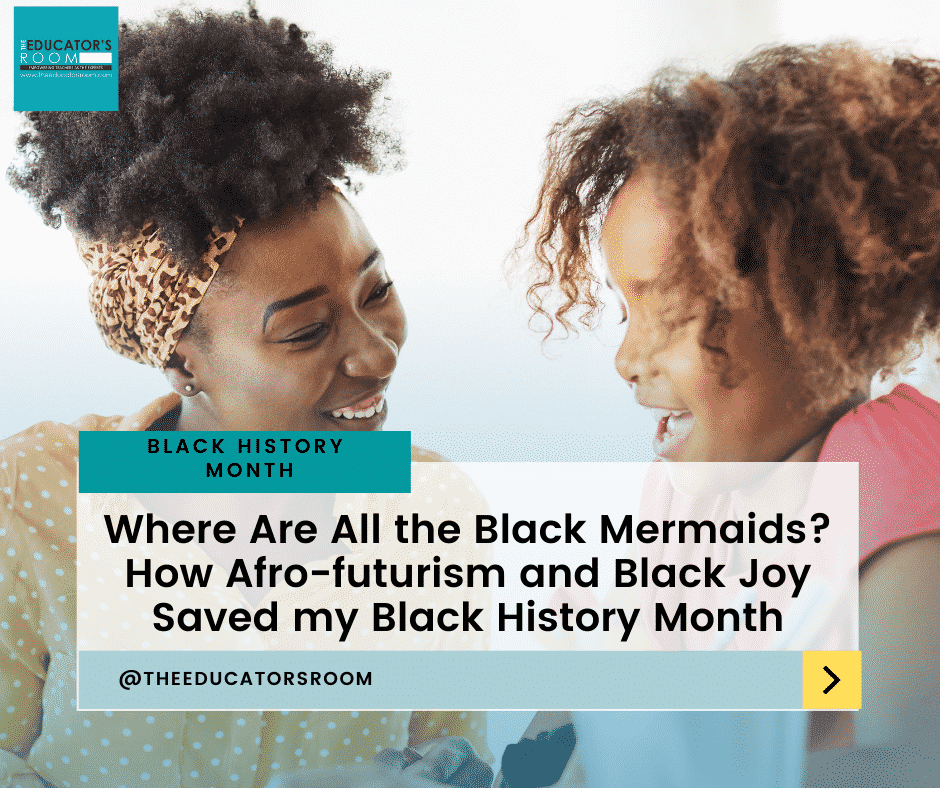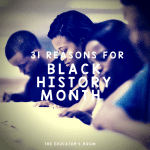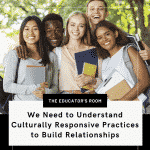Have you signed up for The Educator’s Room Daily Newsletter? Click here and support independent journalism!
Inevitably, as we ring in the new year, teachers begin to pull out their tried and true Black History lessons. Our shortest month begins to fill up with Jackie Robinson and Langston Hughes coloring packets, Civil Rights Icon research projects, and a recounting of so many struggles shouldered by generation after generation of Black Americans. In one way or another, it always comes back to “These are all the atrocities they’ve faced, these are all the amazing ways they’ve faced them.”
It’s not a bad message, and it absolutely has a place in our classrooms, especially when a quiet suburban school district is banning a children’s picture book about Rosa Parks. But there’s something more that too many of us aren’t seeing and aren’t teaching. It’s Afro-futurism. It’s Black Joy. If you’re asking yourself, “What is that?” you’re not alone. Two years ago, I would have been scratching my head too. That is until these two things saved my Black History Month.
Several years ago, I was on a mission to find books to teach in the classroom, books with Black protagonists. Here’s the catch, though. I didn’t want the story to focus on struggle, institutional racism, or the battle for Civil Rights. I just wanted a Black mermaid, or maybe a couple of precocious kid detectives hilariously sucked into a space and time vortex. I never found the books. Instead, I discovered Afro-futurism, the ambitious effort to make my wish list a reality.
Mark Dery first coined the term “Afro-futurism” in his 1994 essay, Black to the Future, but the concept has existed since the first enslaved African imagined a future beyond oppression. The technical definition includes “Imagining greater justice and a freer expression of black subjectivity in the future or in alternative places, times, or realities.” Think Black Panther. Marvel’s 2018 blockbuster with its Black writer, Black director, and predominantly Black cast introduced the masses to a fictional world. In this world, a Black teenage girl is a tech genius. Black women are fearsome warriors. An African empire is a hidden center of technological and intellectual advances. All of this is interwoven with admiration and respect for tribal culture.
Yes, a young Black girl gets to see herself on the big screen changing the world and saving the day, but just as importantly, her White classmates get to see it too. I saw the value of this first hand as one of my White students commented, “In Wakanda, they speak to each other in a way they never do in other movies. They’re being so nice to each other.” While there’s plenty to unpack in that statement, my class was thinking about representation in film and its impact on how we view ourselves and others. It was impactful, it was important, it was a great lesson.
In one CBS Morning clip about Afro-futurism broadcast shortly after the release of Black Panther, you can hear the jubilation in Gayle King’s voice. “It’s so important, though, to see yourself. I remember as a little kid, when I was given a black doll, I said, ‘I don’t want her. She’s not pretty’ because I’d never seen one before. That’s why it’s so important to put these images out….”
Black Panther provides opportunities to dive into heavier content with themes of colonialism, isolation as perseverance, and depictions of stereotypical American Black neighborhoods. It’s also an entry point to the value, entertainment, and joy of Afro-futurism.
Black joy is a revolutionary act. It’s an ecstatic expression of optimism and reclaiming the Black experience. Our students need to hear Black voices and Black storytelling and not just during the second month of the year. Share an inspirational story this February, one that your students haven’t heard through one incarnation or another.
Janelle Monae’s album Dirty Computer reimagines the dystopian fantasy genre. She transforms stereotypical fantasy tropes to celebrate the Black experience. Her acclaimed five-album dive into Afrofuturism is art worth exploring with your students.
Nigerian-American Toni Adeyemi just made a deal with Paramount Pictures to adapt her YA trilogy, Children of Blood and Bone, as well as write the screenplay and produce what is expected to be the next YA franchise. She’s 28 years old. Middle School students, as well as the younger crowd, can connect to Adeyemi’s story.
Characters from Black Panther are inspiring and fun to get to know, but learning about actual people of color crushing stereotypes and forging new world views? That can change a student. It’s time to talk about the question of “What’s Next?” and what do we imagine for our collective future. It’s time to innovate, yet again, and reimagine a revolution in how educators explore Black History Month. After all, if the eyes of a growingly critical world are on education right now, let’s use this stage. Let’s introduce them to Afro-futurism.

Theresa Pogach is a Middle School Interactive Humanities teacher at AIM Academy in Philadelphia, Pennsylvania. She is a recent transplant from Los Angeles, CA, where she taught elementary school for thirteen years at Village School in Pacific Palisades, CA. Beyond being an educator, she is a passionate student of history and an avid writer. Theresa has a BA in English from Loyola Marymount University and teaching credentials from Cal State University Los Angeles.

Resources:
Hip Hop CivicsThe 4 Things Teachers Should Know about the 2018 Black Panther Movie





